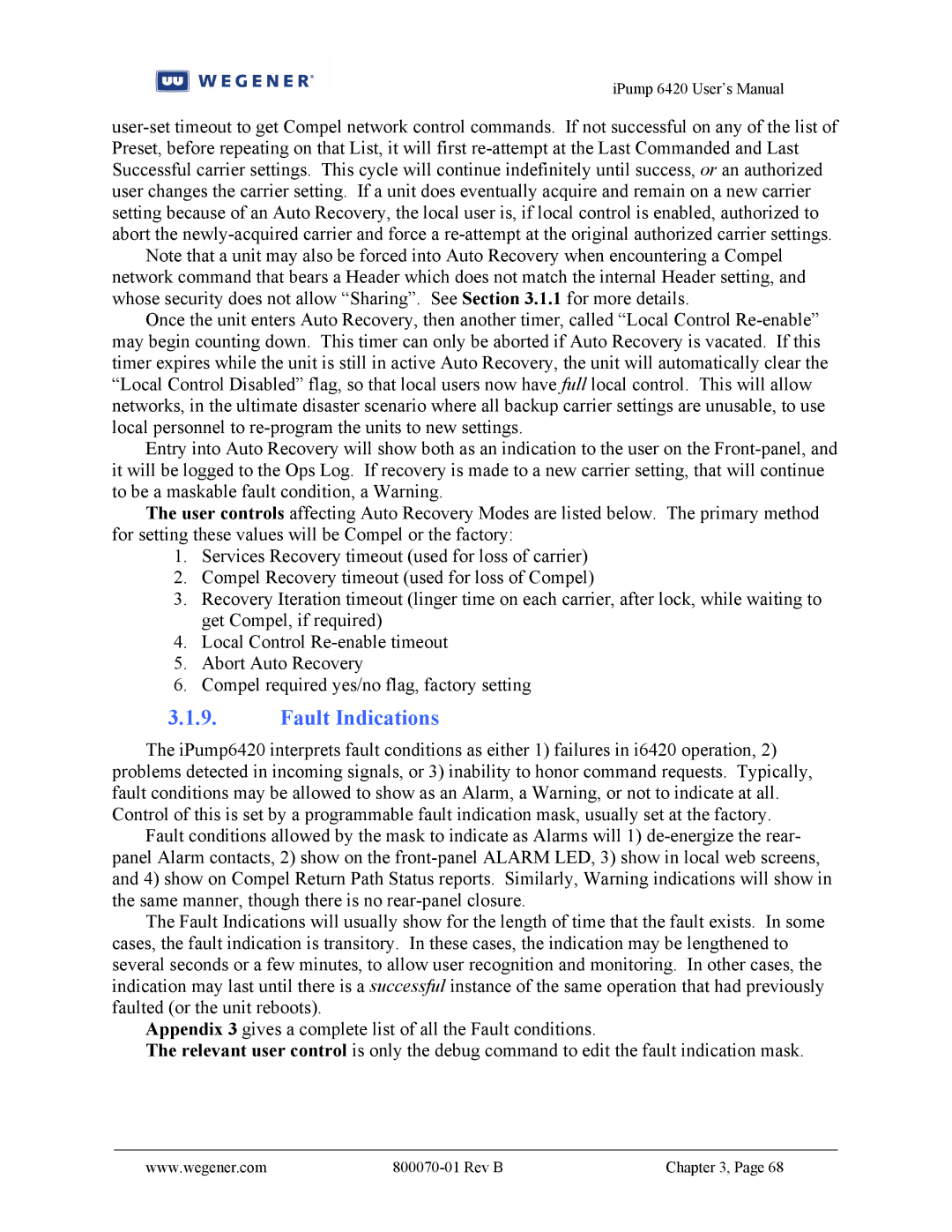
iPump 6420 User’s Manual
Note that a unit may also be forced into Auto Recovery when encountering a Compel network command that bears a Header which does not match the internal Header setting, and whose security does not allow “Sharing”. See Section 3.1.1 for more details.
Once the unit enters Auto Recovery, then another timer, called “Local Control
Entry into Auto Recovery will show both as an indication to the user on the
The user controls affecting Auto Recovery Modes are listed below. The primary method for setting these values will be Compel or the factory:
1.Services Recovery timeout (used for loss of carrier)
2.Compel Recovery timeout (used for loss of Compel)
3.Recovery Iteration timeout (linger time on each carrier, after lock, while waiting to get Compel, if required)
4.Local Control
5.Abort Auto Recovery
6.Compel required yes/no flag, factory setting
3.1.9.Fault Indications
The iPump6420 interprets fault conditions as either 1) failures in i6420 operation, 2) problems detected in incoming signals, or 3) inability to honor command requests. Typically, fault conditions may be allowed to show as an Alarm, a Warning, or not to indicate at all. Control of this is set by a programmable fault indication mask, usually set at the factory.
Fault conditions allowed by the mask to indicate as Alarms will 1)
The Fault Indications will usually show for the length of time that the fault exists. In some cases, the fault indication is transitory. In these cases, the indication may be lengthened to several seconds or a few minutes, to allow user recognition and monitoring. In other cases, the indication may last until there is a successful instance of the same operation that had previously faulted (or the unit reboots).
Appendix 3 gives a complete list of all the Fault conditions.
The relevant user control is only the debug command to edit the fault indication mask.
www.wegener.com |
| Chapter 3, Page 68 |
